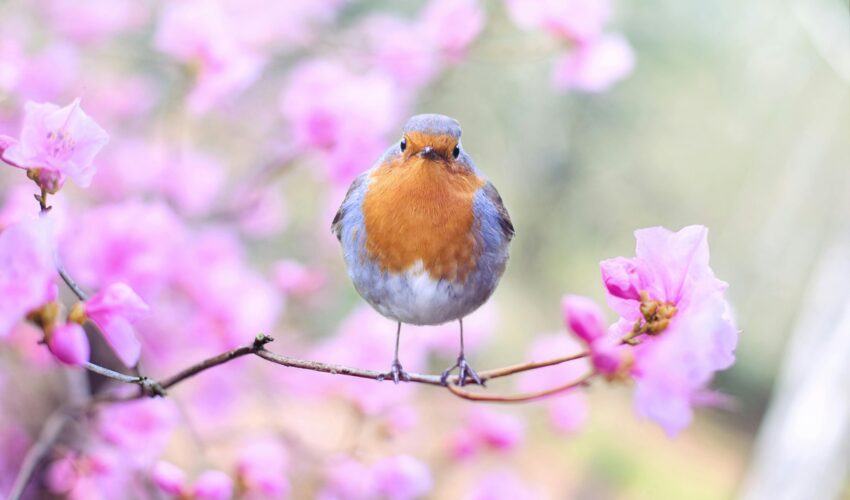March Gardening Tips for Fayetteville, NC: Preparing Your Garden for Spring
- 0 Comments
- 19 March 2025

March Gardening Tips for Fayetteville, NC: Preparing Your Garden for Spring

As the weather in Fayetteville, NC begins to warm up, it’s time to get your garden ready for the new season. March is a crucial month for planting, pruning, and preparing your garden for the growing season ahead. Whether you’re a seasoned gardener or a beginner, this guide will provide you with essential gardening tips to ensure your garden thrives throughout the spring and summer. Continue reading to learn our top March gardening tips for Fayetteville, NC!
1. Prepare Your Soil for Planting
The first step in a successful garden is healthy soil. In Fayetteville, the soil can sometimes be heavy with clay, which affects drainage and root development. To prepare your garden beds, start by aerating the soil using a garden fork or tiller to loosen compacted earth. You’ll also want to incorporate organic matter, such as compost, to improve soil structure and nutrient levels. Adding mulch around the base of your plants can help retain moisture and regulate soil temperature as the weather fluctuates in March.
2. Start Seeds Indoors
March is an ideal time to start many vegetables indoors, especially for those that require a longer growing season. In Fayetteville, the average last frost date typically falls around mid-April, so starting seeds indoors in March gives them a head start before the weather warms up. Some great vegetables to start indoors include tomatoes, peppers, eggplants, and broccoli. Be sure to provide plenty of sunlight or supplement with grow lights to encourage healthy growth.
3. Prune Winter-Shrubs and Trees
Late winter to early spring is the perfect time to prune trees and shrubs in Fayetteville. Pruning not only improves the shape and appearance of your plants but also promotes healthy growth by removing dead or diseased wood. For shrubs like hydrangeas and lilacs, remove any old wood to encourage new blooms. Be cautious not to prune spring-blooming plants too early, as this can reduce the number of flowers you’ll see.
4. Plant Cool-Season Crops
Fayetteville’s mild winters and early springs allow for the planting of cool-season crops in March. These crops, which thrive in cooler temperatures, should be planted early in the month to take advantage of the remaining chill in the air. Some great options for March planting include:
– Lettuce
– Spinach
– Peas
– Carrots
– Radishes
– Cabbage
These crops will flourish as the days get longer and the temperatures rise.
5. Fertilize Your Lawn
March is the time to begin fertilizing your lawn in Fayetteville. Early spring fertilization encourages the grass to start growing strong and green as the weather warms up. Use a slow-release fertilizer to ensure your lawn gets the nutrients it needs throughout the growing season. Don’t forget to water your lawn deeply, especially if we’re experiencing dry spells.
6. Address Pests and Diseases Early
As spring approaches, insects and garden pests become more active. Now is the time to start monitoring your garden for signs of pests like aphids, caterpillars, and scale. Organic pest control options, such as neem oil or insecticidal soap, can help prevent infestations from taking over your plants. Be sure to also keep an eye out for signs of disease, such as yellowing leaves or mold growth, and treat them promptly to keep your garden healthy.
7. Add Mulch to Garden Beds
As the temperatures in Fayetteville begin to rise, adding a layer of mulch to your garden beds is an excellent way to conserve moisture, suppress weeds, and keep the soil temperature consistent. Apply mulch after you’ve planted your early spring crops but before the soil begins to dry out. Organic mulches like shredded leaves, straw, or wood chips are great choices that will break down over time, enriching the soil.
8. Plant Trees and Shrubs
March is an excellent time to plant new trees and shrubs in Fayetteville. The mild weather conditions give newly planted trees and shrubs time to establish roots before the summer heat sets in. Be sure to choose varieties that are well-suited to our local climate, such as Eastern Redbuds, Dogwoods, and Crape Myrtles. Proper watering and mulch application will help your new plants thrive as they get established.
9. Plan for Summer Blooms
While you’re in the garden, take some time to plan for summer color. In March, you can plant warm-season annuals like marigolds, zinnias, and sunflowers. You can also plant summer-blooming perennials like coneflowers and black-eyed Susans to ensure your garden has vibrant colors throughout the warmer months.
10. Keep an Eye on the Weather
Finally, always keep an eye on the weather forecast. Fayetteville can experience occasional cold snaps, even in March. Be prepared to cover any tender plants if temperatures dip below freezing. Keep row covers, frost blankets, or even old sheets on hand to protect your plants during unexpected cold spells.
Conclusion
March is a busy month for gardeners in Fayetteville, NC, but with a little preparation and attention to detail, you can set the stage for a beautiful and productive garden. From starting seeds indoors to planting cool-season crops and pruning shrubs, there’s plenty to do to get your garden ready for the spring growing season. By following these tips, you’ll be well on your way to a flourishing garden that you can enjoy all season long.
Stay connected with us on Facebook for all the latest gardening tips, events, and updates! Be sure to visit our page to see upcoming events, workshops, and more to help you make the most of your gardening season. We’d love to see you there!
Happy Gardening!
